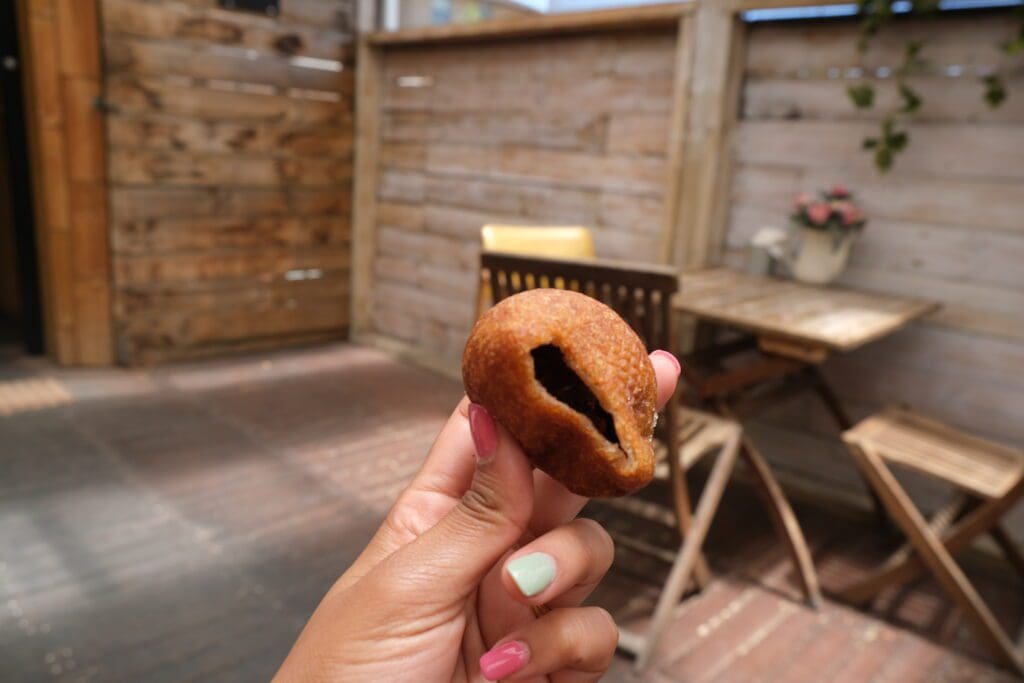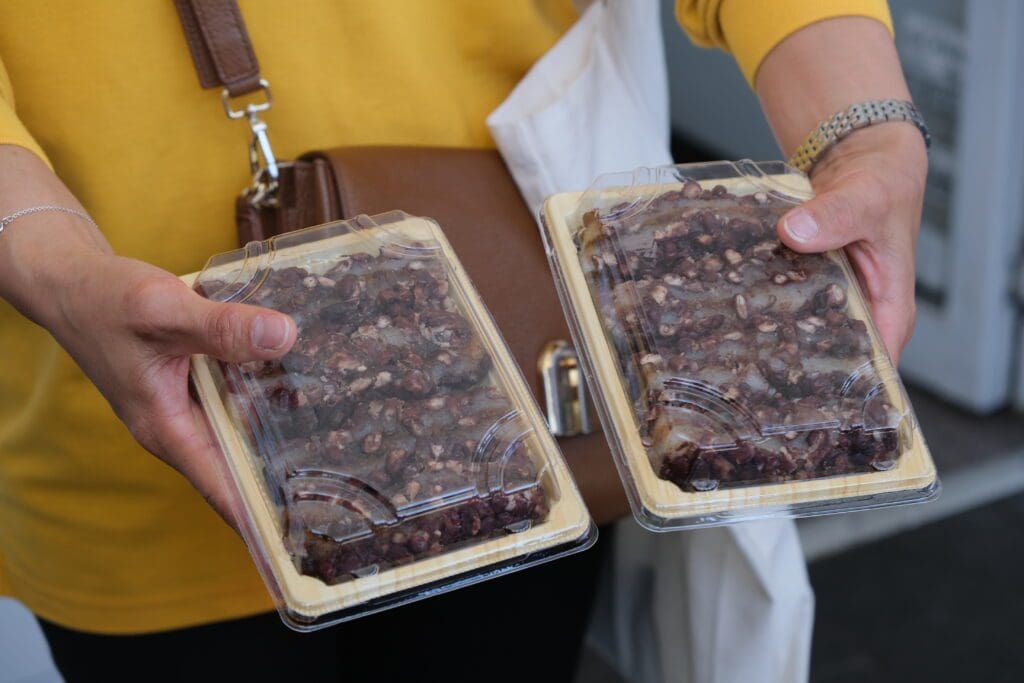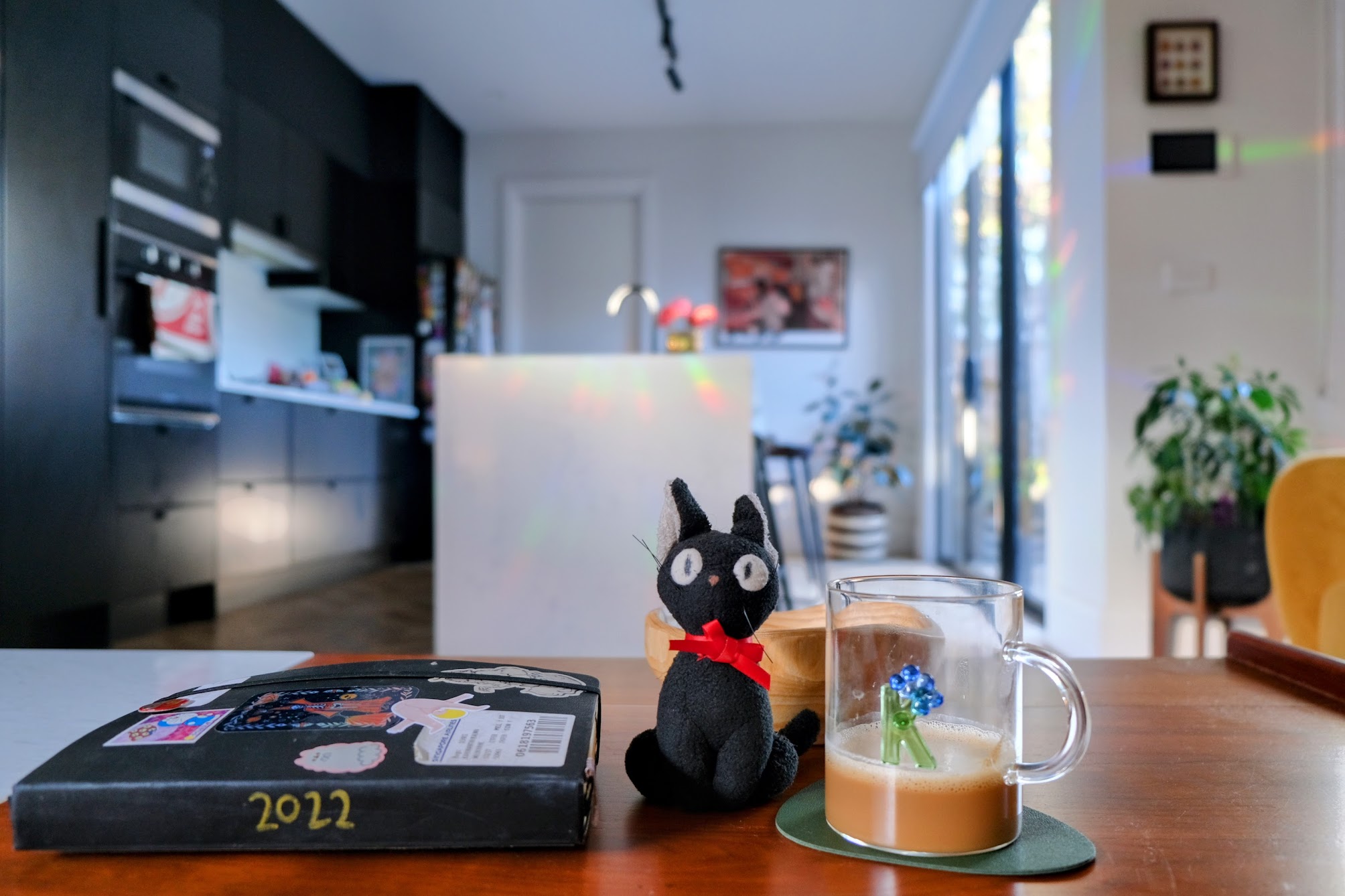While in Sydney, as a part of my birthday gift this year, Jik took me to Eastwood for a Korean Food tour. The tour lasted around three hours, and we learned much about Korean culture through Korean cuisine. Here is the trail of it:-
Bibimbap – Mixed Rice – The Staple in Korean Food Culture
Our first stop was Pu Ji Mi restaurant. We were both delighted that the restaurant was located inside a building as it felt like exploring Eastwood in a deeper layer instead of just touching the surface with only main roadside places.
The first Korean dish we tried was arguably the most well-know-by-foreigners Korean dish apart from the famed Korean fried chicken, Bibimbap. Bibimbap, translated to mixed rice, essentially is a variety of cooked food items, from meat, and vegetables to eggs (uncooked or cooked) and sauces, served on a bed of cooked rice inside a Ttukbaegi (Korean earthenware pot).


The way to eat Bibimbap is to mix all of them together, so the flavours and sauces are mixed through. Then only we can eat it. It’s usually a dish shared with the table and accompanied by Banchan. Banchan is a Korean side dish that comes in smaller plates to be shared with everyone at the table.
Soegogi-muguk – Korean Beef Soup – The Ultimate Comfort Food

We also shared a bowl of Soegogi-muguk, a clear soup with two main ingredients: beef and Daikon radish.
Tae, the guide, told us it’s her go-to soup to make at home because it’s her kids’ favourite. Slurping the hearty soup, I could see why. It was comforting and reminded me of my grandma’s goat soup, perfect for winter.
Jok-Bal – Braised Pig’s Trotters – A Delicacy in Korean Food Culture

Before leaving the restaurant, we were shown a plate of Jok-Bal, braised pig’s trotters, which has been marinated for 48 hours and cooked multiple times a day before serving it to customers to give the richness of the flavour. I was bummed that we didn’t get to try the delicacy of the Hwanghae-do province, but it’s also understandable that pig trotters might not be the best choice for a mixed-crowd food tour.
I have added it to my to-eat list while in South Korea.
Gimbap – Sushi Wrapped Rice – Go-to Picnic Food

After a bit more roaming around the building, passing by the Korean supermarket, we stopped at the back of the food stall to try some Kimbap or Gimbap. Kimbap is the Korean version of Japanese sushi. Essentially cooked rice and other ingredients are roll-wrapped in seaweed.
The main difference between Sushi and Gimbap, as explained by Tae, was the number of ingredients that make up for it. In sushi, there are usually one or two ingredients aside from the rice. Meanwhile, Kimbap usually has more than three, with preserved food items as a part of it. Another difference would be the accompanying condiments. Sushi is usually eaten with soy and vinegar, while Gimbap is with salt and sesame oil.

Kimbap is the go-to picnic food in Korea, also a typical food packed for kids’ lunches because it’s easy to make and carry.
Korean Street Food


I don’t need to tell you how many Korean street food there are. We kept seeing plenty of it at each stop of our food tour. So much so that three of our tour mates went rogue, bought and eat more during the tour.
It amazed me how they kept going and demolishing additional food between our stops while the rest of us tried to phase ourselves. Well done, boys!
Po–jang – Takeout Food Culture in Korea

Another thing I noticed during the Korean food tour was the endless choices of takeout food. From our first stop, opposite the restaurant, I saw a big stall selling all kinds of takeout food, from semi to fully-cooked food, from meat and vegetables to rice dishes. I learned from Tae that takeout culture is pretty big in Korea (like Singapore), especially among young professionals.
Chapssal – Fried Glutinous Ball – The Korean Doughnut

Next, we moved to a bakery named La Vigne. From the name, I was sceptical that we would be eating authentic Korean food. But my judgy self proved to be wrong.
La Vigne serves both Western and Korean-style cakes and pastries. More so, it has a beautiful courtyard at the back where we chit-chatted while munching on yummy Chapssal.

Chapssal is a fried glutinous ball with red ban fillings. Jik said it reminded her of Gemblong, a traditional Indonesian street food. Though it’s not exactly the same, both share similarities, but I still prefer Chapssal as it’s less sweet (how very Asian of me, eh?!).

Baekseolgi – Sweet Sticky Rice – A Token of Gratitude


The next food might just be the most endearing dish in Korean culture. Baekseolgi is a sweet sticky rice made of rice flour. It’s usually made and eaten to celebrate and give thanks, including Baek-il, the celebration of the 100th day of a baby in Korean culture. The sticky rice we had that day was a bit different than the typical white-coloured Baekseolgi as it was mixed with red beans. Unfortunately, it’s also my least favourite of the lot.
Buchimgae – Korean Pancake – The Best Drinking Snack

“Many moons ago, during moonson season, Korean farmers used to gather around to drink rice wine and the go-to food to eat on those rainy days was Buchimgae“, Tae told us.
Her story gave a bit more context on why Buchimgae has always been on the menu (and appeared on many tables) whenever we go to a Korean bar. Buchimgae is a traditional Korean version of “bar food”, usually eaten hot and dipped in vinegar and soy sauce.
Japchae – Fried Glass Noodle – The Korean Thanksgiving Dish

Japchae is the last savoury Korean food we had during the tour. NGL, I was a bit disappointed that we didn’t get to try Korean army stew during the food tour, but I guess not many would enjoy the spicy hot soup on a Sydney Summer day.
Back to Japchae, it’s a Korean stir-fried made of vegetables and glass noodles. It reminded me of Chinese Chap Choy, only drier and with a slight hint of sweetness. Japchae is a celebration food, Tae explained to us. It’s the most common dish during the festivity, including Chuseok. It’s also the dish Korean makes to honour the guests who come for a visit.
Bingsoo – Shaved Ice – The Dessert That Met Asian Requirement


The Korean food tour ended with a bowl of Injeolmi Bingsoo, a milk-based shaved ice with red beans, slivers of nuts and glutinous rice cake toppings. Like Bibimbap, the first dish we had on the tour, the way to eat Bingsoo is to rigorously mix everything in the bowl together before shared with the table in smaller individual bowls.
I have demolished a few bowls of Bingsoo in my life, and I could easily say this was one of the best. It was milky, melted in the mouth, and absolutely delicious. It also perfectly met the Asian requirement for dessert: not too sweet. I had three servings of it. So, if you live in Sydney, stop by Yellow Stage in Eastwood for a bowl of world-class not-too-sweet shaved ice.
And that concludes the virtual Korean food tour for you. I also want to shout out to Tae Kyoung from the Taste Tour, our Korean food guide. Tae was knowledgeable, kind and very helpful. She made the tour so much more enjoyable 🙂 Thanks Tae!
More Taste Tours in Sydney: Harris Park Sydney Little India The Best Butter Chicken in The Southern Hemisphere // Exploring Eastwood North Sydney Koreatown // Trail of Korean Food Tied with Culture and Traditions // Cabramatta A Slice of Vietnam Culture in Sydney Australia // A Multi-Cultural Feast In Merrylands Sydney.
Follow me on Instagram @KultureKween for more recent updates.






Hi, i think that i saw you visited my web site so
i came to “return the favor”.I’m attempting to find things to improve my
web site!I suppose its ok to use a few of your ideas!!